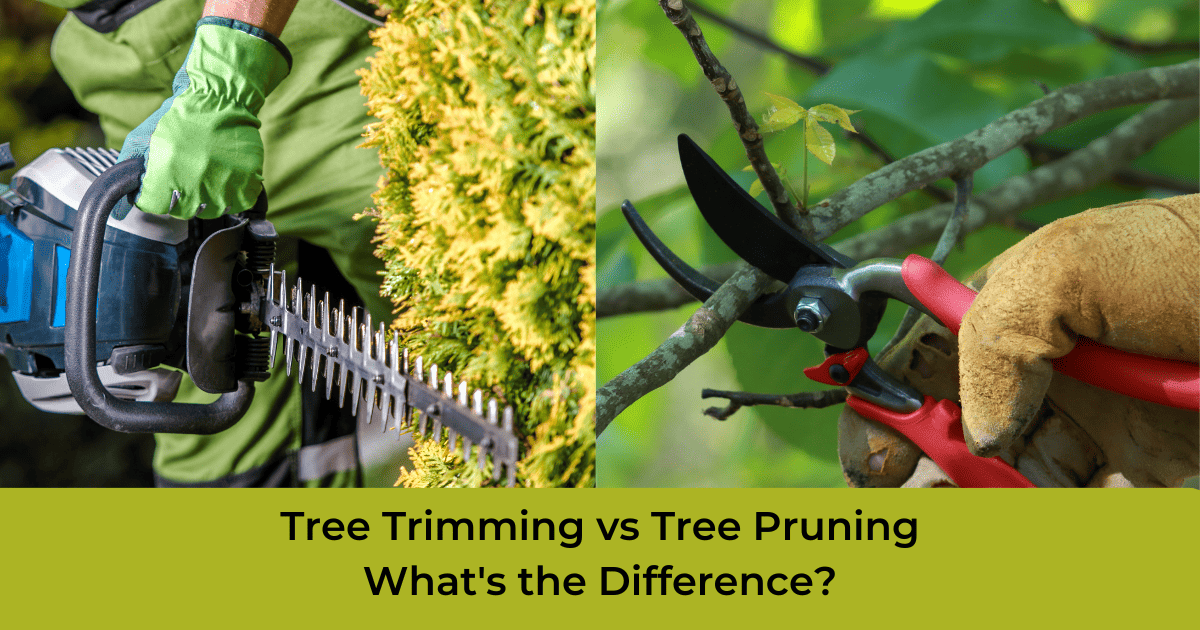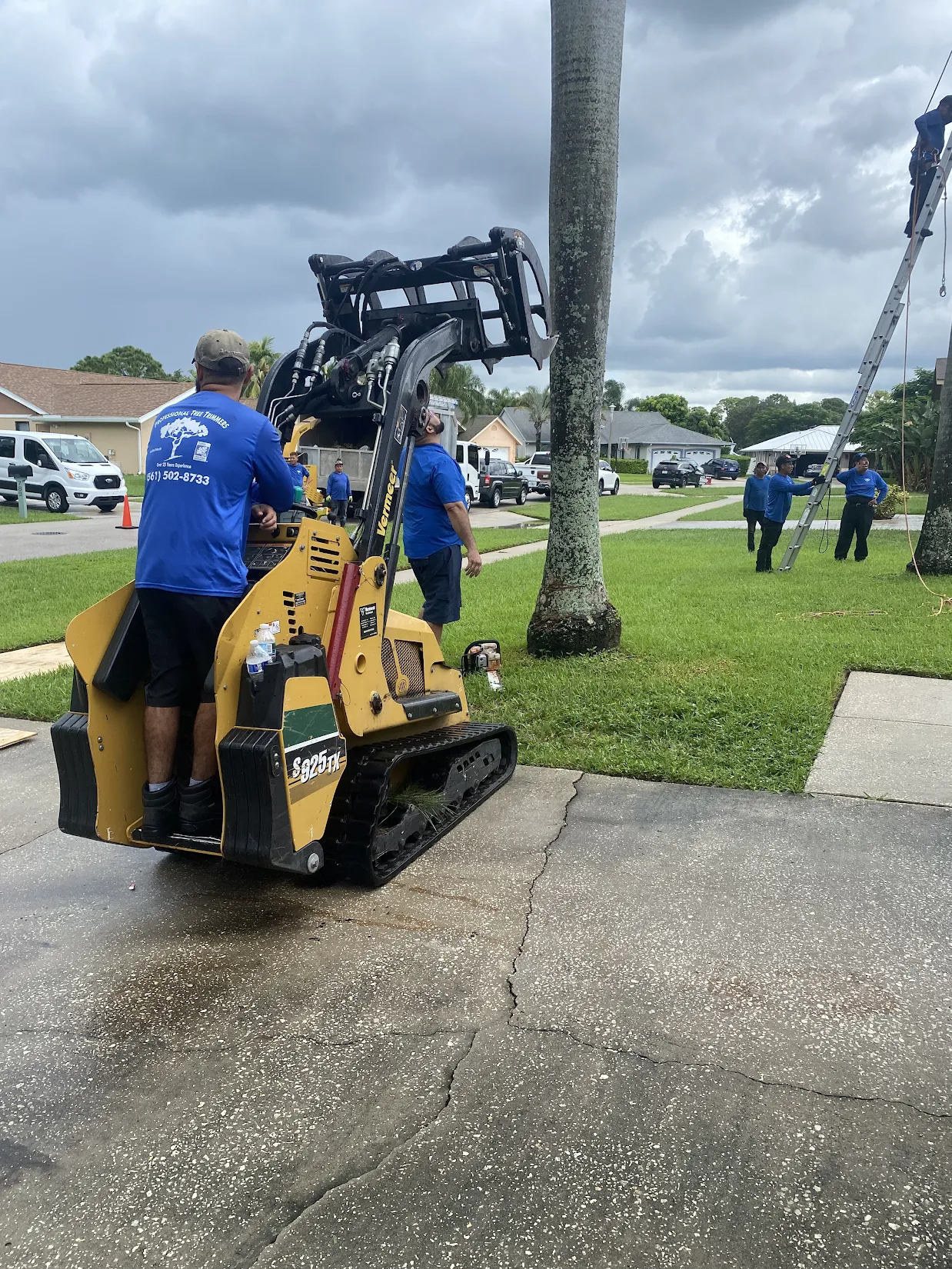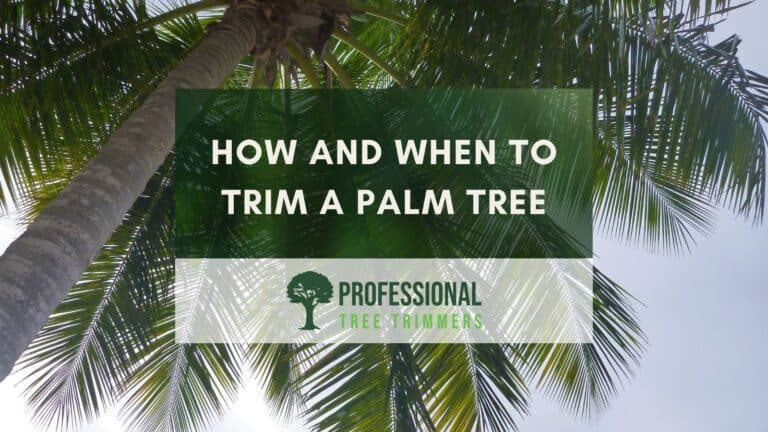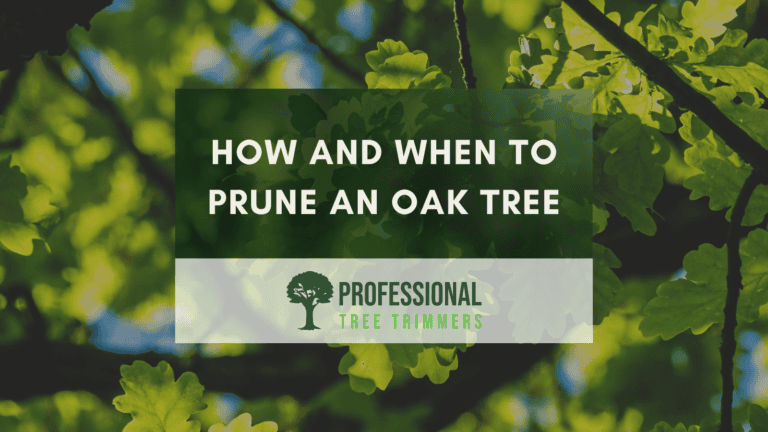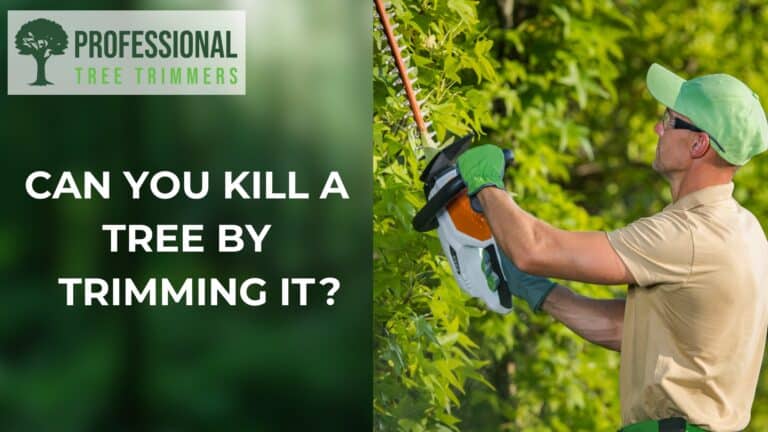Tree trimming and tree pruning are essential practices in arboriculture, each serving distinct purposes in the care and maintenance of trees.
Tree trimming involves the removal of overgrown or unwanted branches to enhance the overall aesthetic appeal and safety of the tree.
Tree pruning is a more specialized technique that focuses on selectively removing specific branches for the health and structure of the tree.
Both practices require the use of specialized tools, and the cost of tree trimming or pruning will vary depending on the size of the tree and the extent of the work that needs to be done.
Differences Between Tree Trimming and Tree Pruning
Understanding the difference between tree trimming and tree pruning is essential for effective tree care. While both practices involve modifying a tree’s structure, they serve distinct purposes. The table below outlines the key disparities between tree trimming and tree pruning, covering aspects like purpose, tools required, appearance, cost, sustainability, and maintenance.
| Differences | Tree Trimming | Tree Pruning |
| Purpose | Promotes healthy growth, and maintains aesthetic appeal. | Removal of live branches to enhance tree health. |
| Equipment and Tools required | Pruning shears, loppers, saws. | Pruning shears, saws, pole pruners. |
| Appearance | Maintains aesthetic appeal through regular shaping. | Focuses on tree health, may result in a less refined appearance. |
| Price | Generally lower cost due to less intensive work. | It can be costlier, especially for extensive branch removal. |
| Sustainability | Enhances tree health and longevity. | Supports long-term tree health. |
| Maintenance | Needs regular maintenance for appearance. | Less frequent maintenance for overall tree health. |
Whether you prioritize the visual appeal of your trees or their overall health, recognizing when to trim or prune is crucial. Each method contributes to the well-being and aesthetics of trees, making informed decisions paramount for effective tree care.
Purpose
Tree trimming focuses on maintaining the desired shape, size, and aesthetic appeal of a tree. By removing excess or overgrown branches, trimming enhances the tree’s visual appearance while preserving its overall structure. Unlike pruning, which prioritizes health and structure, trimming is primarily performed for aesthetic reasons. Trimming contributes to a well-maintained and visually pleasing landscape, ensuring that the tree maintains its proper shape and size.
The primary purpose of tree pruning is to enhance the overall health, structure, and appearance of a tree, through the selective removal of live branches, and dead, diseased, or damaged limbs, pruning promotes optimal tree growth and vitality. Furthermore, it allows for the shaping of the tree according to specific design requirements. Pruning helps prevent disease, improves air circulation, and ensures the tree’s longevity by eliminating potential hazards and maintaining a balanced form.
While both tree pruning and tree trimming involve the removal of branches, their purposes differ. Tree pruning centers on health, structure, and disease prevention, ensuring the tree’s long-term well-being. On the other hand, tree trimming emphasizes the tree’s appearance, focusing on aesthetics and maintaining a visually appealing landscape. Both practices contribute to tree care but with distinct goals – health enhancement versus visual appeal.
Equipment and Tools Required
Tree trimming requires specific tools for shaping and refining its form. Pruning shears, or pruners, are frequently used for trimming shrubs, flowers, vines, and small growth. Also, hedge trimmers prove instrumental in shaping hedges and maintaining a neat appearance. While not as extensive as the tools needed for pruning, tree trimming often involves basic handheld tools that can address specific aesthetic aspects of the tree. These tools contribute to the visual appeal of the tree by removing excess growth, shaping its silhouette, and promoting an aesthetically pleasing landscape.
The process of tree pruning demands specific equipment and tools to ensure effective and precise cutting. Essential tools for tree pruning include pruning saws, both rigid and folding, which are invaluable for cutting larger branches that hand shears cannot handle. Pruning shears, commonly known as pruners or secateurs, play a crucial role in cutting smaller branches and twigs with a diameter of one inch or less. Lopping shears, similar to pruning shears but with longer handles, are employed for branches of slightly larger diameter. These tools collectively facilitate the removal of dead, diseased, or overgrown branches, promoting the overall health and structure of the tree.
Tree pruning tools prioritize functionality for precise cutting of various branch sizes, emphasizing health and structure enhancement. In contrast, tree trimming tools focus on shaping and refining the tree’s appearance, with a primary emphasis on handheld tools suited for smaller growth and aesthetic maintenance. Both sets of tools serve distinct purposes – health-driven precision for pruning and aesthetic-oriented trimming for maintaining visual appeal.
Appearance
Tree trimming primarily focuses on the outer aesthetics of the tree, shaping it to enhance curb appeal and visual attractiveness. Trees subjected to trimming exhibit a more refined and manicured appearance, with excess growth and uneven branches removed. The final result emphasizes a neat and well-groomed silhouette, contributing to an attractive landscape. Commercial clients often choose tree trimming to make their properties more appealing, attracting visitors through a visually enhanced and inviting environment.
Tree pruning, when executed correctly, results in a visually pleasing and natural-looking landscape. The fundamental form and character of the tree are maintained, showcasing a well-structured and healthy appearance. Properly pruned trees reflect a balance between removing dead or diseased branches and preserving the inherent beauty of the tree. The outcome is a tree that seamlessly integrates into its surroundings, contributing to an aesthetically enhanced environment.
While both tree pruning and tree trimming contribute to an improved appearance, the emphasis differs. Tree pruning maintains the tree’s inherent form and character, prioritizing health and structure. On the other hand, tree trimming places a stronger emphasis on outer aesthetics, resulting in a more manicured and refined appearance.
The choice between pruning and trimming depends on the desired outcome, whether it is a natural and healthy look or a meticulously groomed appearance that enhances the commercial appeal.
Price
The average cost to trim a tree is around $475, ranging between $250 and $700 per tree, with smaller trees possibly costing as little as $50 for minimal work and larger projects reaching up to $1,700 or more.
Tree pruning costs vary based on the size of the tree and the specific services required. Here is a general overview of tree pruning costs based on tree size:
- Pruning cost for small trees (up to 30 feet tall): Starts at around $300
- Pruning cost for medium Trees (30 to 60 feet tall): Ranges from $600 to $800+
- Large Tree (60 to 100 feet tall) pruning cost can range from $1,700 to $2,200
- Extra-Large Trees (over 100 feet tall): Starting at $2,500
Sustainability
Tree trimming, when conducted sustainably, yields numerous benefits. It removes dead branches, enhances healthy growth, prevents diseases, promotes better fruit production, and improves overall curb appeal. Safe practices, such as careful chainsaw use and appropriate cuts, contribute to a healthier, visually appealing, and environmentally beneficial outcome.
Sustainable tree pruning, performed by professionals, is crucial for various reasons. It improves tree health by eliminating dead or dying branches, detects diseases early, and enhances growth while shaping the tree. Furthermore, pruning helps clear areas, adding value to the property, and saving on expenses by preventing damage, making it a sustainable practice for both the tree and the surrounding environment.
Maintenance
Tree trimming and tree pruning are essential maintenance tasks for trees. While they share some similarities, their objectives differ. Trimming involves removing overgrown or dead branches to enhance the tree’s appearance and ensure safety. Pruning, on the other hand, focuses on improving the tree’s health, structure, and growth by removing specific branches. The cost of these services can vary depending on factors such as tree size, location, and species.
Trimming vs Pruning – Which is Better?
Both trimming and pruning have their unique purposes and can be beneficial for a tree’s health, longevity, and aesthetic appeal. Trimming focuses on maintaining the tree’s shape and size, while pruning focuses on removing infected or dead branches to improve overall tree health.
Depending on your goal for the tree, you may need to use one or both techniques. Consulting a professional, such as an ISA-Certified Arborist, is recommended to determine the right approach based on your tree’s specific needs.
How Often Should You Trim and Prune Trees?
Trees should be trimmed or pruned based on their maturity.
Tree Trimming:
Mature trees: Every 3-5 years
Young trees: Every 2-3 years
Avoid over-trimming to prevent energy loss, weakening the tree. Consult an arborist for specific advice on the type of tree. Consider late winter or spring for optimal results.
Tree Pruning:
Young trees: Prune annually
Mature trees: Every 3-5 years.
Over-pruning can lead to weakened trees, making them susceptible to pests and diseases. Ensure branches are pruned properly to prevent regrowth.
How do you trim tree branches without killing a tree?
To avoid harming the tree, utilize proper pruning techniques by making cuts just outside the branch bark ridge, angling down away from the tree’s stem, and refraining from over-pruning, especially avoiding “topping,” which removes the entire crown.
Is it OK to trim trees in the summer?
Summer pruning is generally not recommended, as it can hinder tree growth. During summer, when trees are actively growing, cutting branches might discourage new growth, affecting the tree’s overall health. However, there are exceptions for certain trees like subtropical varieties.
Summer pruning can sometimes be beneficial for fruit trees, like removing dead limbs for robust branch development and healthy fruit production. Understanding the goals and benefits of summer pruning, such as pest control and shaping, is crucial for effective tree care. Always consult with professionals or arborists to determine your tree’s specific needs before pruning, ensuring the long-term health and vitality of your trees.
